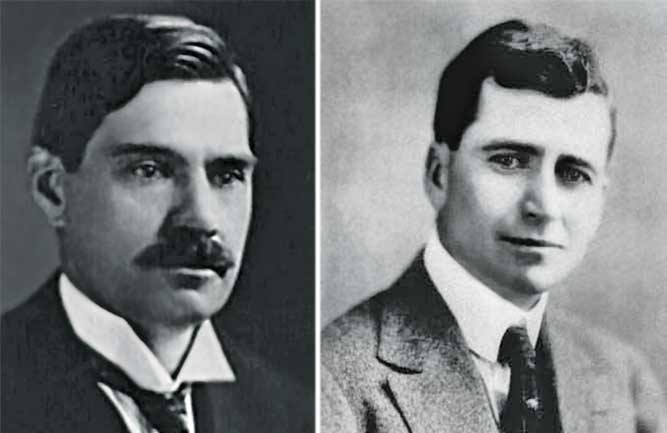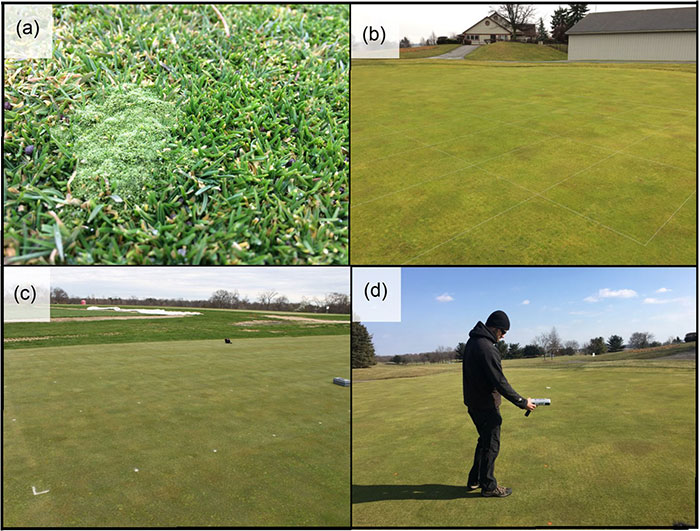Off the Record: New bentgrasses — the story continues
Editor’s note: Piper and Oakley will be distributed by Mountain View Seed. Kenna is a consultant for the company.

Mike Kenna
In last month’s column, I talked about Rutgers University and the USGA working together to release two new creeping bentgrasses. To celebrate the 100th anniversary of the Green Section, the variety names selected are Piper and Oakley. Charles V. Piper and Russell A. Oakley were instrumental in the early days of the Green Section. A few highlights of the past milestones of the USGA involvement with bentgrass include:
- In the 1920s, Piper and Oakley worked with bentgrass and established the Arlington Turf Garden in Washington, D.C. (located where the Pentagon is today).
- In the 1930s, John Monteith Jr., Ph.D., and Fred V. Grau conducted the “pie green” experiments across the country that produced Cohansey, Congressional and Toronto creeping bentgrass cultivars.
- In 1937, Musser began breeding bentgrass leading to the 1954 release of Penncross.
Rutgers University has a long history of cool-season grass breeding. In 1960, C. Reed Funk, Ph.D., started the turfgrass breeding program. He had a productive career that spanned four decades. During his tenure, hundreds of new turfgrass varieties revolutionized the turfgrass industry.
In 1981, Rutgers initiated a long-term creeping bentgrass improvement program. Southshore and L-93 were two varieties developed by the program in cooperation with Richard Hurley, Ph.D., Lofts Seed.
Funk retired in 1996, and Bill Meyer, Ph.D., a commercial turfgrass breeder previously with Pure Seed, joined the Rutgers team and has continued the success of the breeding program.
The National Turfgrass Evaluation Program (NTEP) conducted its first putting green trials in 1989. Providence and PRO/CUP were the only varieties better than Penncross. In 1993, there were more than 21 entries that performed better than Penncross. Yet, many golf course superintendents questioned the usefulness of NTEP data from universities.
In 1997, NTEP, the Green Section and the Golf Course Superintendents of Association of America conducted on-site golf course testing of new bentgrass varieties. Penn-A1, Penn A-4 and Penn-G2 were among the top performers and set a new standard for creeping bentgrass.

Charles V. Piper, Ph.D., and Russell A. Oakley, Ph.D. (Photo courtesy of USGA Green Section)
In 2003, Stacy Bonos, Ph.D., started her career at Rutgers, and one of her objectives was to improve dollar spot resistance in bentgrass. A recent variety from the program is Declaration, which has improved dollar spot resistance.
Rich Hurley, Ph.D., calls the new generation of bentgrass SuperBents. His definition is “An advanced generation, highly refined bentgrass variety, bred for genetically enhanced disease resistance and scientifically designed for use on closely maintained golf greens, fairways and tees.” These are the fourth generation of bentgrass varieties. Examples developed at Rutgers University with their commercial cooperators include 007, 777, 007XL, Mackenzie and Tyee. Some of the research support for the Rutgers breeding effort was from the USGA.
Is there a fifth generation on the way? Yes, there is, and Bonos is breeding new bentgrass high-performance varieties with multiple disease resistance. Better genetic resistance to common bentgrass disease problems could significantly reduce fungicide use for more sustainable golf. She collaborates with Steven Johnson, Ph.D., Peak Plant Genetics, on fine-tuning Piper and Oakley to meet the demand for more sustainable bentgrasses.
The NTEP initiated new bentgrass putting green and fairway trials in 2020. The new test has 15 entries, along with standards at 19 locations in the U.S. Nine trials are standard test locations at universities, while four sites will have ancillary tests for traffic tolerance, thatch accumulation and anthracnose. Four additional tests will be on golf courses, and the final two are under a reduced fungicide regime.













I am the historian at Washington Golf & Country Club where Dr. Piper first discovered what became Washington Bent. There is a wonderful story told by the late Brick Wood, who caddied for Piper one day when he stopped on our old fourth green and noticed the green was brown except one spot that was a gorgeous green. Piper took a knife from his golf bag and cut out some sod to take to the Arlington Experimental Farm and plant. This is where it all started and that location is now part of our driving range.